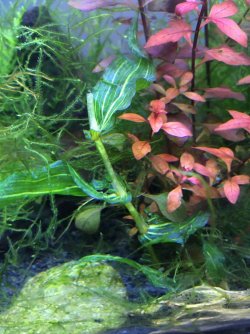There really is no way to guarantee safety. The first observation though is that plants from temperate zones (all of Canada in the south and up to the Arctic) require a "winter" rest, and when placed in a tropical aquarium (which I assume is the case here) will possibly last the summer but not beyond.
The pathogen risk is very real. Pathogens that are detrimental to fish are different in temperate areas from those in tropical, and in between. This is one main reason why fish, plants and snails from an aquarium should never be released into the local ecosystem; these can carry pathogens to which the tropical species have an immunity, but local species likely not. The same obviously works in reverse; you can introduce pathogens for which the tropical species in the aquarium have no immunity. I have no idea if there is any method by which you can somehow kill these pathogens without harming/killing the plants themselves; I have never come across this, but all the biologists say do not do it, so I wouldn't.





